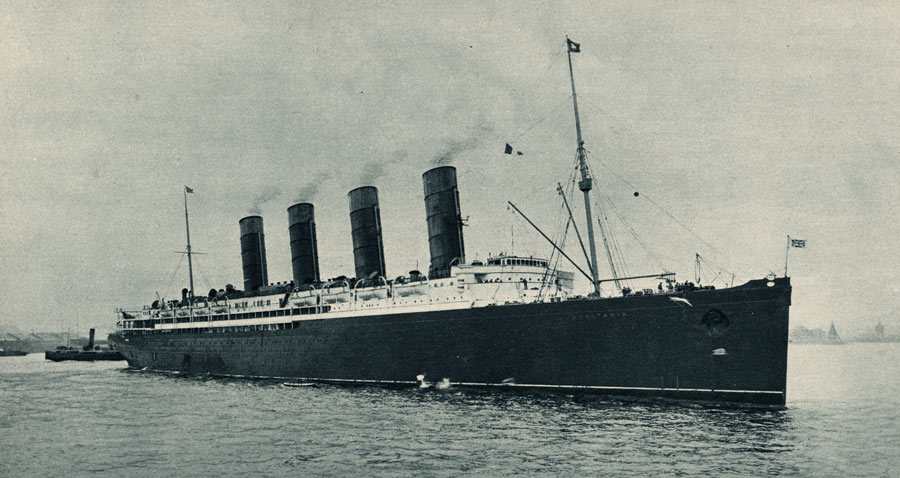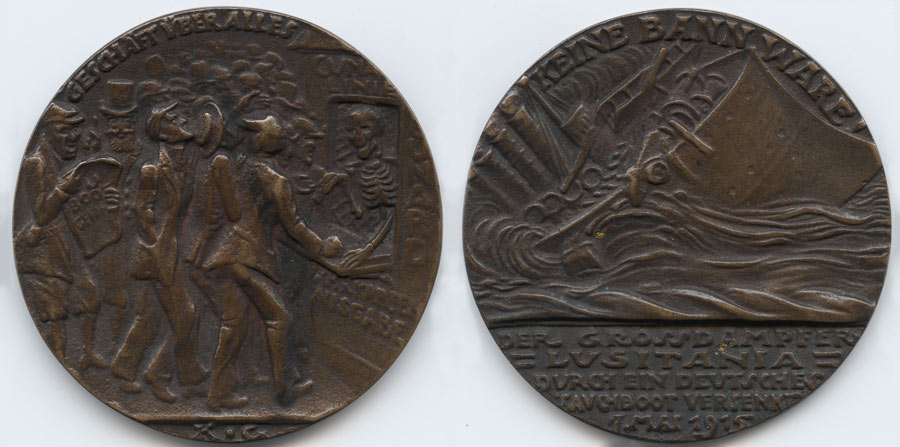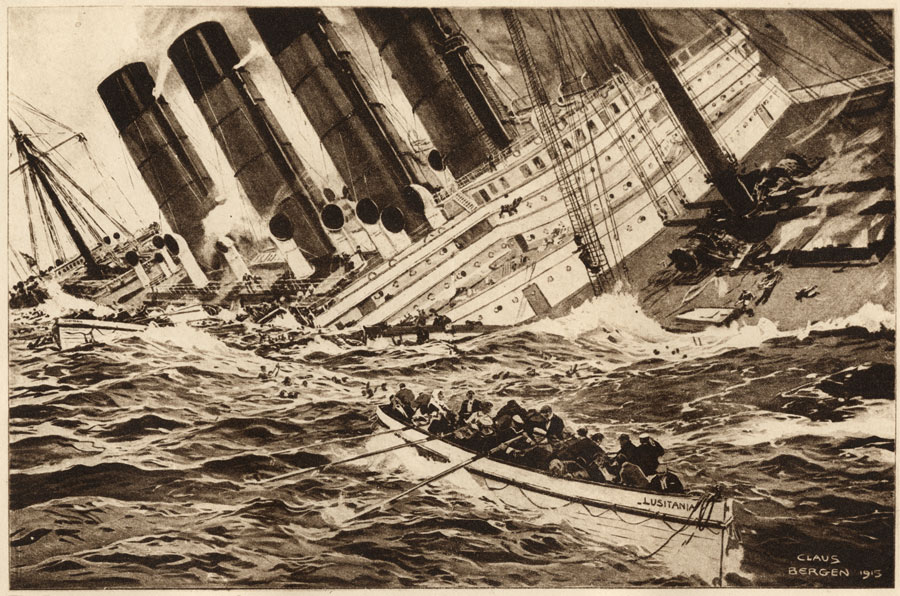“There was a dull explosion and a quantity of debris and water was flung into the air beside the bridge. The waterspout knocked me down beside the Marconi office. The explosion seemed to lift the ship hard over to port and was followed soon after by a second rumbling explosion entirely different to the first.”
James Brookes of Bridgeport, Connecticut wrote this first-person account of the first moments of the sinking of the Cunard liner, Lusitania.
On May 7, 1915, the passenger liner Lusitania was sunk by German submarine U-20 in British waters. Of the passengers, 1,198 drowned, including many women and children and 128 U.S. citizens. Public outrage spun quickly around the world.

U.S. Secretary of State Robert Lansing wrote of the reactions: “The news of the sinking of the Lusitania on May 7, 1915, sent a wave of horror throughout the country, particularly the East. The public denunciation of German barbarism was bitter. Many newspapers were outspoken in demanding an immediate severance of diplomatic relations with Germany, and no small number clamored for war.”
In August 1915, German artist Karl Goetz cast a commemorative medal depicting the May 7, 1915 sinking of the Lusitania. He intended it to be a metallic political cartoon, but it became a propaganda tool. On one side the Lusitania was shown sinking by its stern (it sunk bow first) with artillery pieces and airplanes on the deck. The captions (translated) relate: No Contraband Goods – The Liner Lusitania Sunk by a German Submarine – 5 May 1915. The reverse shows a skeleton selling tickets to long lines of unwary passengers, captioned (translated): Business Above All. A newspaper headline warns: U-Boat Danger.

It was the May 5 date on the medal that verified to the British that the Germans pre-meditated the sinking, a cowardly act. In fact, artist Goetz simply got the date wrong from using an erroneous newspaper report. About 430 medals of the first version with the May 5 date were minted in Goetz’s home. He soon corrected the date to May 7, which is the Goetz-minted coin in the War at Sea exhibit case in the Main Gallery at the Museum and Memorial. There were between 41 to 45 medals of this version made. The Museum and Memorial has two in the collection.
The British quickly utilized the first German version as propaganda. British Naval Intelligence ordered about 250,000 copies struck with the May 5 date and sold them through the Lusitania Souvenir Medal Committee to the public at one shilling each. The British-produced medal was presented in an attractive box with an explanatory certificate. Proceeds of the sales were to benefit the St. Dunstan’s Blinded Soldiers and Sailors Hostel. The British medal was thicker and more crudely rendered than the Goetz medal.

The Museum and Memorial continues to look for European naval materials, especially objects and documents related to submarine warfare. If you have potential items to donate, please consider donating your artifact to the Museum and Memorial.
Learn more about donating objects







